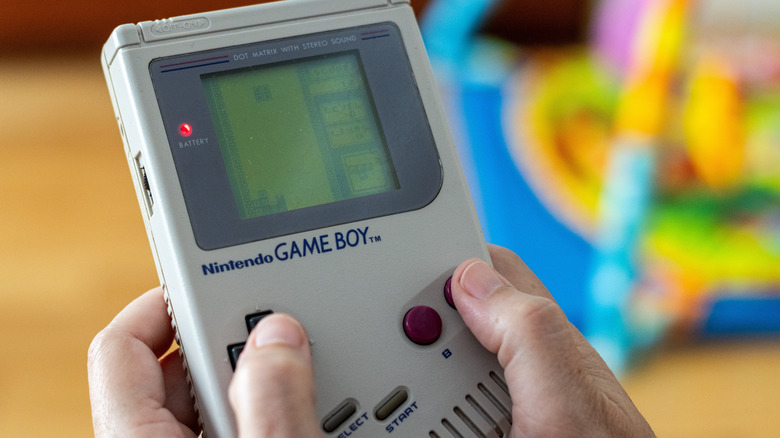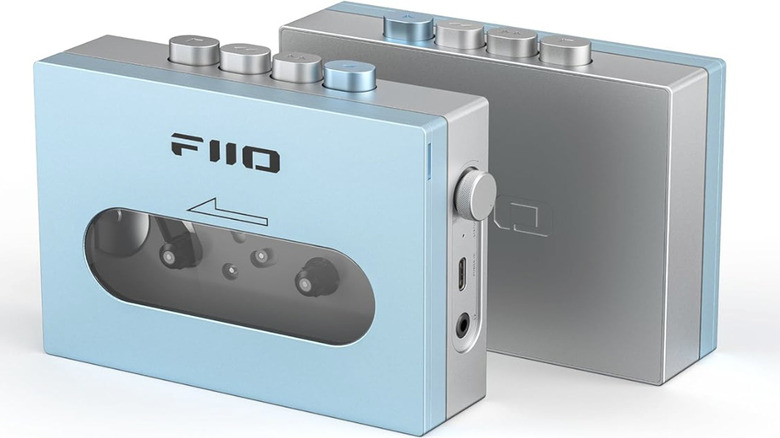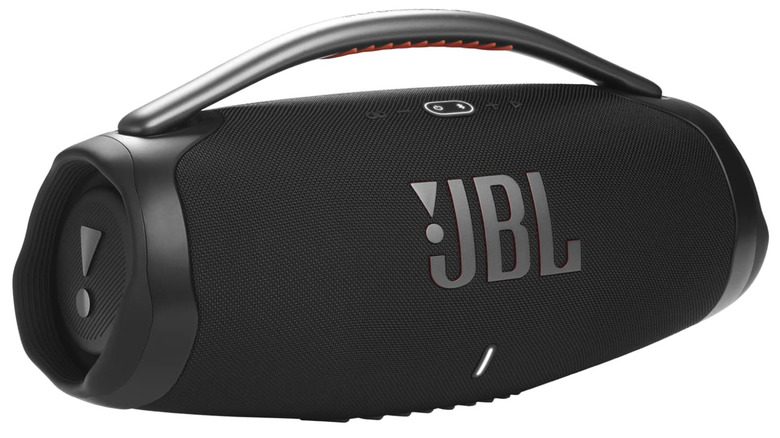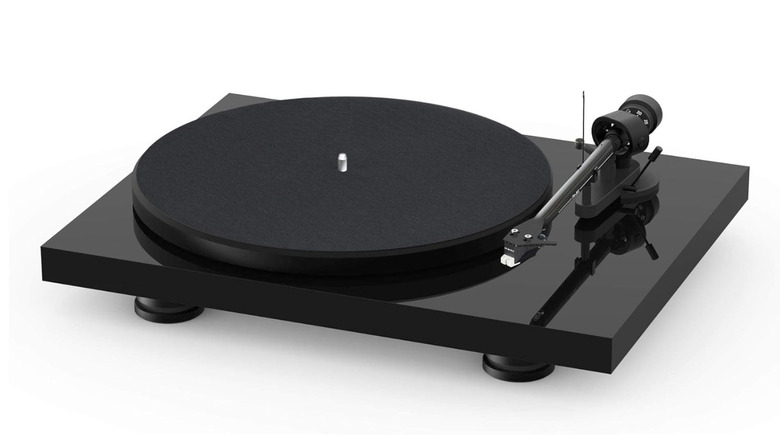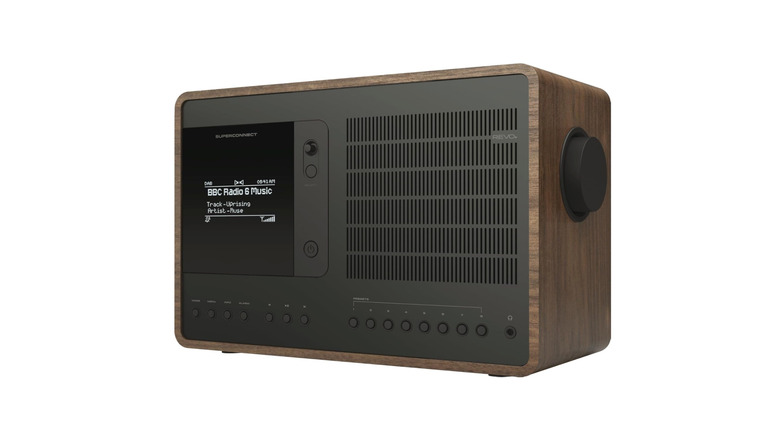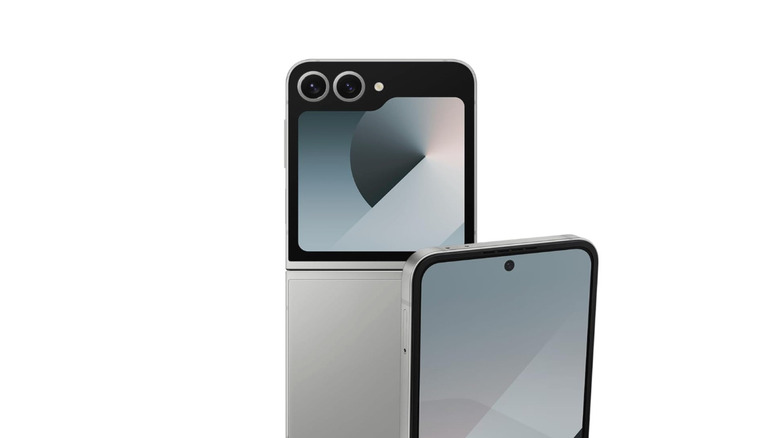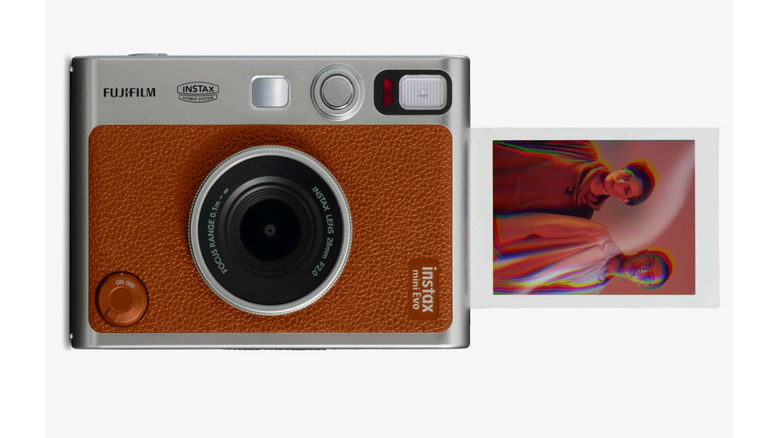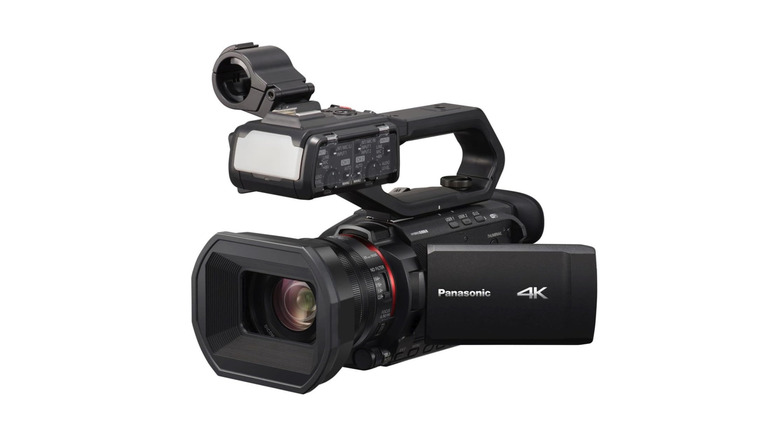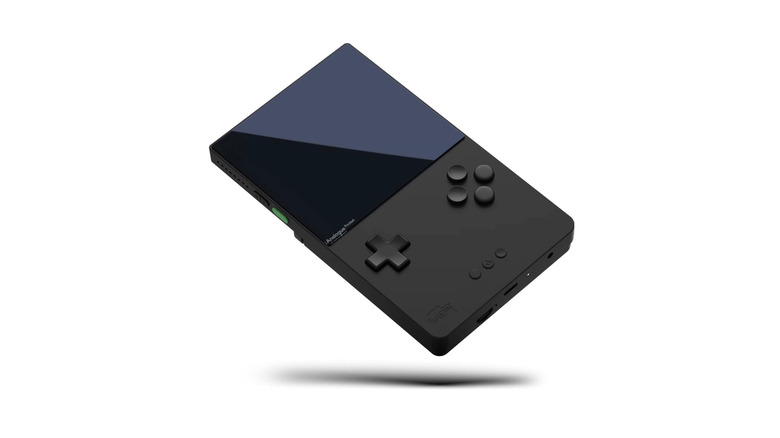8 Retro Gadgets That've Made A High-Tech Comeback
We may receive a commission on purchases made from links.
Not everything new is necessarily better. While many of us chase smarter screens, slimmer profiles, and AI everything, there has been a quiet retro rebellion bubbling away in the background. Old technology has somehow managed to unstick itself from the past and is again finding its place in today's tech-saturated world. We shouldn't think of the tech as dusty old relics dragged out of the attic, either. Some of it is updated, high-tech reboots that are streamlined and often built better than much of the current gear.
However, it is easy to assume that it is here to tug at the nostalgia heartstrings. There may be comfort in flipping open a phone like it's 2004 again or listening to that snap, crackle, and pop that is synonymous with vinyl records. However, functionality is another driving force. The desire for physical objects like a cassette tape or a Polaroid image hasn't gone away, even in today's digital age.
Indeed, the pull toward the physical isn't just emotional. It's also practical. These gadgets all had their purpose in the past. They were made for specific tasks, and they did them well. They also did them without all the updates, settings, and distractions that come with modern-day devices. But, with just a few contemporary upgrades and a little bit of polish, they're proving they still have their place. Retro gadgets are not here for decoration or as a novelty item. They work, and people are using them again. Here are a few that are outperforming expectations in today's market.
Portable cassette players
Just when you thought you had seen the last of sticking pencils in holes to rewind tape, portable cassette players have somehow rewound their way back into the mainstream. And while nostalgia is a big part of the story, that's not the only reason why Americans are snapping up cassette tapes in the hundreds of thousands every year. Some popular artists are helping fuel the revival by releasing albums on cassette, while movies like "Guardians of the Galaxy" and TV shows like "Stranger Things" have made the format cool again.
While Sony has yet to announce any plans for a new cassette-playing Walkman, other companies like FiiO and We Are Rewind are cashing in and offering high-quality portable players. Looking at the FiiO CP13, you can see that it is a proper throwback. It's a solid, boxy cassette player with big mechanical buttons that deliver a satisfying clunk when pressed. There's no Bluetooth, no display, no fluff — just press play and go. It is unapologetically retro, but it has a modern twist where it counts. Those dual AAs are no longer necessary because you can charge the CP13 via USB-C, and you'll get up to 13 hours of listening time with a full charge.
TechRadar assures us that the audio performance holds up well and the device can handle premium in-ear monitors without issue. But it's the genuine homage to the Sony Walkman of yesteryear that appeals most. So if you still have old tapes lying around or you're one of those niche buyers looking to get into the format, the FiiO CP13 nails it.
Boomboxes
In the '70s and '80s, boomboxes took music out of bedrooms and onto the streets. They became an essential part of block parties, breakdancing, and hip-hop culture with their twin cassette decks, built-in radios, and powerful speakers. By the late '80s, music heads were decking them out with stickers and graffiti, and they had become status symbols that blasted mixtapes, radio recordings, and tape-to-tape copies everywhere. The Walkman, Discman, and later MP3 players ensured the inevitable downfall of the boombox — and before we knew it, streaming and Bluetooth had taken over.
Around a decade ago, artists like Tom Sachs were already reimagining the boombox as more than just old tech. His Boombox Retrospective 1999–2015 exhibit, shown in Austin in early 2015, featured working sculptures built from materials like duct tape, plywood, and salvaged parts. Each one played curated playlists and celebrated the boombox as a symbol of community and street culture. Around the same time, the revival had reached Japan, where "big radio-cassette player" exhibitions in Tokyo attracted both curious younger crowds and older fans nostalgic for the cassette-tape sound (via Kyodo News).
Unsurprisingly, it didn't take long for modern brands to get in on the act. The JBL Boombox 3 kept the spirit alive but swapped tapes out for wireless streaming and added waterproofing, a customizable EQ, and massive sub-bass power. PCMag even gave this modern-day beast with old-school energy its Editors' Choice award in 2022.
Record players
The great vinyl comeback is ongoing, with sales hitting 43.6 million in the United States in 2024. Streaming may still be the go-to format for the vast majority, but records take second place and account for nearly half of all album sales. While this is still only 8% of total U.S. recorded music revenue, it's an impressive feat in the modern day, nonetheless. What is a tad confusing is that around half of vinyl buyers don't even own a record player. This suggests that many are in it for the collecting rather than the nostalgia.
However, with the other half actually owning turntables, it's safe to assume that record player sales have also increased. Modern turntables don't necessarily have that vintage look. There are classic models available, but the best modern record players have had some serious tech upgrades. Many now include built-in preamps, removing the need for additional gear, while USB ports and Bluetooth connectivity add a bit of digital flexibility. Additionally, automatic tonearms ensure vinyl is no longer the victim of careless needle placement.
The Pro-Ject Debut Carbon Evo is a great example of what a modern turntable can offer. What Hi-Fi enthused about its focus on refinements that matter, like improved motor damping, height-adjustable feet for better isolation, and a heavy steel platter with built-in noise reduction. Additionally, the carbon tonearm that gives it its name delivers precise tracking and detail without sacrificing the warmth that audiophiles like to fuss about. So much so that SlashGear saw fit to include it as a choice for one of the best record players in the midrange pricing category.
Retro radios
Okay, so radio didn't really disappear, but it did fade into the background while we moved on to podcasts, playlists, and smart speakers. That said, the format is having a quiet little comeback. More people are tuning in again for its simplicity and the feeling of connection it offers. It's live and unpredictable, and you don't have to scroll through a million options just to hear someone talk or play a decent song. Many people are also embracing radio again because it acts as a kind of antidote to screen fatigue, and it also offers a bit of company and background noise when washing the car on a Sunday afternoon.
But this revival isn't just about radio as a format — it's about the return of the radio as a physical object. And this comeback is far from being about dusty old dials. The Revo SuperConnect Stereo blends retro looks with serious tech. What Hi-Fi even says it has a "charming retro-modern design." Behind its walnut veneer and aluminum detailing, you get internet radio, Bluetooth, Spotify Connect, and even a sharp LED screen. It sounds good, too, with full, warm, and way more refined audio than you'd expect from something that looks like it belongs in a 1960s living room. So yes, the radio is making something of a comeback, but, like every other piece of returning tech, it has had a bit of a tune-up.
Flip phones
Flip phones were cool before they were even invented, when Captain Kirk and his crew used them on TV long before they turned into real technology. They did eventually kick off in the mid-'90s as a sleeker alternative to the bulky brick phones of the time. The Motorola StarTAC led the charge. It was a homage to that Star Trek communicator and sold over 60 million units worldwide. By the early 2000s, flip phone popularity had exploded. Models such as the Motorola Razr were fashion icons on top of communication tools. However, by the 2010s, the modern smartphone took over, and the flip phone fell off the face of the Earth.
Until now, of course. While there are plenty of affordable and practical flip phones like Nokia's modern reboots, at around the $1,000 mark, a flagship model like the Samsung Galaxy Z Flip 6 sure ain't no burner. This once-obsolete design has reached the higher planes of the technology landscape, with SlashGear commenting that the "flip-style foldable game in the U.S. has changed." While we did note that some of its AI tricks are a bit gimmicky, the Flip 6 is a slick, solid, and fast flip phone with some serious lenses. It's expensive, but the combination of fashion appeal and flagship power hits the spot and puts the fun back into flip phones.
Instant cameras
Do you remember those old Polaroid cameras from when you were a kid? Of course you do. How could you forget them? Every family had one, and every event was marked by bringing one out. You probably still have plenty of those birthday party images stashed away in some box in a closet somewhere. In the 1970s, Polaroid actually controlled nearly two-thirds of the instant camera market in the U.S. — so much so that the brand name became synonymous with the product, much like Hoover or Xerox. However, the writing was understandably on the wall for instant cameras when digital photography took off. By 2001, Polaroid had filed for bankruptcy, and by 2008, it had shut down instant film production. This meant people would never find out why they had to shake the film while waiting for their images to develop. Were they trying to dry it?
Anyway, while Polaroid was collapsing, Fujifilm was quietly keeping instant photography alive with its Instax line. Yet, by the 2010s, the unthinkable happened when a small group of Polaroid enthusiasts created a brand-new kind of instant film from scratch and kicked off what became The Impossible Project — a startup that saved Polaroid from extinction. Now, Polaroid and Fujifilm are going at it head-to-head to dominate the instant camera revival. These modern models even offer hybrid technology, with the Fujifilm Instax Mini Evo being one that offers creative filters, USB-C charging, and smartphone app support. SlashGear listed it as an excellent Polaroid alternative, but given the hit-and-miss nature of instant cameras, we also listed it as one that is actually worth the money.
Camcorders
Throughout the '80s and '90s, camcorders were ubiquitous at every barbecue, birthday party, and wedding celebration. You can trace its rise from bulky, suitcase-sized machines to compact home units used on family vacations and DIY projects. However, they quietly faded when smartphones and point-and-shoot cameras took the spotlight and eventually became the tool of filmmakers and other professionals. So camcorders never truly disappeared. They just vanished from the hands of the ordinary person for a while. But as video quality expectations have climbed, so has the interest in dedicated gear built specifically for the job. Nowadays, regular users looking to level up their content are ditching the smartphone and circling back to the camcorder.
The Panasonic HC-X2000 is a good example of where the technology has landed. It was named Best Camcorder of CES 2020, and it delivers some serious specs in a compact form made for solo shooting. Among them are 4K recording at 60 fps, a 24x optical zoom, speedy autofocus, and in-camera live streaming. It also boasts XLR audio inputs for some serious sound, meaning you can shoot like a pro without the full crew. Despite its feature-packed design, it's still lightweight, streamlined, and an approachable piece of tech for content creators who want a bit more than what their phone can offer. More recently, SlashGear asked the question, "Are camcorders cool again?" and weighed up the pros and cons of another model, the Panasonic HC-V900, against the iPhone 16 Pro Max, Galaxy S24 Ultra, and Google Pixel 9 Pro.
Retro handhelds
Handheld gaming has never gone away and likely never will. In fact, with sales of the Nintendo Switch 2 expected to break records, handheld gaming is very much in a healthy position. SlashGear even mentioned that, despite the increased price, the Switch 2 feels like a steal. What has made a comeback recently are retro-style handhelds. These are devices that feel and look like the Game Boy of yesteryear. In some cases, they even use the same cartridges.
The appeal here isn't just nostalgia; It's also the simplicity. Retro handhelds are smaller and lighter. There's no managing storage, downloading updates, or syncing cloud saves. You're playing with traditional D-pad buttons and a focused interface that doesn't require a learning curve. And, compared to smartphone gaming, there are no notifications or distractions pulling you out of the game. For many users, it's really not as much about specs as it is about having fun. All you need to do is turn it on and play.
The standout retro handheld is the Analogue Pocket. But this console isn't just a homage to classic handheld consoles. It's loaded with high-end hardware designed for some serious retro gaming. It plays Game Boy, Game Boy Color, and Game Boy Advance cartridges natively with zero emulation, and PCMag noted its "incredible screen" that makes those old games look brand new again. It also supports other systems via adapters, and Analogue's openFPGA platform gives developers a way to build and share new cores. The retro handheld is not trying to compete with its modern sibling. It's carving out its own space and doing it beautifully.
